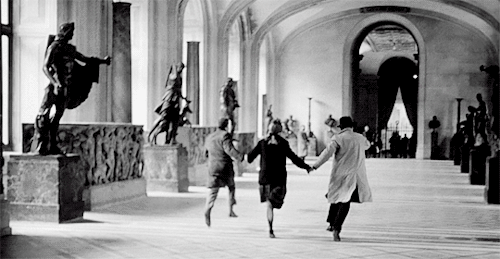Latest Posts by tipsorina - Page 4
Supermoon Uses
Since there will be a supermoon tonight (Dec 3rd 2017) I figured I would make a helpful post for you all.
What is a supermoon? A supermoon happens when there’s a Full Moon or New Moon at the same time as the Moon’s closest approach to the Earth; perigee. It’s also known as Super Full Moon, Super New Moon and Perigee Moon.

There is a huge increase in the moons energy allowing for a heightened ability to cast a spell that will come to fruition.
It’s a good time to pull out the spells that mean the most to you; the ones you really want to work
A full moon is always a powerful time for meditation, energy healing, and recharging your energy field and chakras. The full moon shines down so much pure energy that anything it touches can’t help but feel its radiance and love. The supermoon effect amplifies that power and makes it even stronger.

Some things you can do to make use of this time.
1. Get in Touch With Your Emotions- Emotions are more easily accessible during this time making it simpler to acknowledge and release them. Express your inner truths and feelings, write down your intentions.
2. Take a Moon Bath – Spend time under the moon bathing in its light. Steep your body and spirit in purifying light, wash away negativity and leave yourself fresh and renewed.
3. Manifest Your Desires - Spend some time picturing your life as you wish it to be. What are your intentions? The full moon will magnify any energy you send out, and help guide it into the welcoming embrace of the universe.
4. Release Negativity - The moon can reach the deepest parts of your soul and pull out the things you’ve been hiding or trying to ignore. The moon illuminates any negative emotions.
5. Be Creative - The full moon is the time to do whatever creative activity makes you feel joyful!
6. Boost Your Feminine Energy - Women, take note: you in particular need the feminine lunar energy of the moon in order to keep your energy field vibrant and strong. This is not to discount the guys, because they need feminine energy as well—remember everything is about balance—but the female energy of the moon is essential for women to maintain the health of their field.
It’s the perfect time of year for this to happen, if used correctly this moon has the potential to set up your new year to be the best in a long time.


https://twitter.com/Mexicolore/status/1109509361049702406
http://www.mexicolore.co.uk/maya/teachers/resource-the-boys-in-the-band
Brazilian cherries aren’t related to common cherries at all! They look like this and taste rather sour:



Also, if you’re not used to them, Brazilian grapetrees look really alien:


The fruit is formed in the trunk, not the branches!
Y'all ever just suddenly have the overwhelming urge to swim??? Like not actively but you just wanna,,, be in the water and have some Peace
Iridescent clouds, looking like a rainbow in the clouds.
A diffraction phenomenon caused by small water droplets or small ice crystals individually scattering light. Larger ice crystals do not produce iridescence, but can cause halos, a different phenomenon.
Master List of Museums with Greek, Roman, Egyptian, and/or Near Eastern Antiquities in the United States of America

These collections may not be extensive or on display (and may contain only one culture from the above list), and I am including museums with minimal collections as well; please check with the museum before you visit or check their collections search online if the object(s) you wish to see is/are on view.
Feel free to message me if I’ve missed a museum! I’ll be constantly updating this post. (Initial Post: October 16, 2018; First Update: October 16, 2018, 2:18 p.m. Pacific; Second Update: October 16, 2018, 7:15 p.m. Pacific; Third Update: October 17, 2018, 6:29 p.m.; Fourth Update: October 21, 2018, 10:36 p.m.; Fifth Update: November 4, 2018, 9:06 a.m.; Sixth Update: June 1, 2019, 8:55 a.m.)
Alabama:
Anniston Museum of Natural History (Anniston, AL)
Birmingham Museum of Art (Birmingham, AL)
California:
Badè Museum of Biblical Archaeology (Berkeley, CA)
Iris & B. Gerald Cantor Center for Visual Arts at Stanford University (Stanford, CA)
J. Paul Getty Museum (“the Getty” which includes the Getty Center and the Getty Villa) (Los Angeles, CA)
Los Angeles County Museum of Art (Los Angeles, CA)
Phoebe A. Hearst Museum of Anthropology at the University of California, Berkeley (Berkeley, CA)
Robert and Frances Fullerton Museum of Art (RAFFMA) at the California State University, San Bernardino (San Bernardino, CA)
Rosicrucian Egyptian Museum (REM) (San José, CA)
San Diego Museum of Man (San Diego, CA)
Santa Barbara Museum of Art (Santa Barbara, CA) (Collection for Greek and Roman Art not on view, but can be found in Collections Search)
Colorado:
Denver Museum of Nature & Science (Denver, CO)
University of Colorado Boulder Art Museum (Boulder, CO)
Florida:
The John & Mable Ringling Museum of Art at Florida State University (Sarasota, FL)
Lowe Art Museum at the University of Miami (Coral Gables, FL)
Museum of Dinosaurs and Ancient Cultures (Cocoa Beach, FL)
Museum of Fine Arts, St. Petersburg (St. Petersburg, FL)
Tampa Museum of Art (Tampa, FL)
Georgia:
Michael C. Carlos Museum at Emory University (Atlanta, GA)
Illinois:
The Art Institute of Chicago (Chicago, IL)
The Field Museum (Chicago, IL)
The Oriental Institute at the University of Chicago (Chicago, IL)
Spurlock Museum of World Cultures at University of Illinois, Urbana-Champaign (Urbana, IL)
Krannert Art Museum at the University of Illinois, Urbana-Champaign (Champaign, IL)
Indiana:
Eskenazi Museum of Art at Indiana University (Bloomington, IN)
Gustav Jeeninga Museum of Bible & Near Eastern Studies at Anderson University (Anderson, IN)
Kansas:
Museum of World Treasures (Wichita, KS)
Maryland:
Baltimore Museum of Art (Baltimore, MD)
John Hopkins Archaeological Museum (Baltimore, MD)
Walters Art Museum (Baltimore, MD)
Massachusetts:
Arthur M. Sackler Museum at Harvard University (Cambridge, MA)
Berkshire Museum (Pittsfield, MA)
Fitchburg Art Museum (Fitchburg, MA)
The Harvard Semitic Museum (Cambridge, MA)
Museum of Fine Arts, Boston (Boston, MA)
The New Bedford Museum of Glass (New Bedford, MA)
Peabody Museum of Archaeology and Ethnology at Harvard University (Cambridge, MA)
Worcester Art Museum (Worcester, MA)
Michigan:
Institute of Archaeology & Siegfried H. Horn Museum at Andrews University (Berrien Springs, MI)
Detroit Institute of Arts (Detroit, MI)
Kelsey Museum of Archaeology at the University of Michigan (Ann Arbor, MI)
Minnesota:
Minneapolis Institute of Art (Minneapolis, MN)
Mississippi:
The Lois Dowdle Cobb Museum of Archaeology at Mississippi State University (Mississippi State, MS)
The University of Mississippi Museum (Oxford, MS)
Missouri:
Museum of Art and Archaeology at the University of Missouri (Columbia, MO)
Nelson-Atkins Museum of Art (Kansas City, MO)
Saint Louis Art Museum (St. Louis, MO)
Nevada:
Las Vegas Natural History Museum (Las Vegas, NV) (Note: the artifacts are replicas of the tomb of Tutankhamun and other Egyptian antiquities and are one of only two sets that were authorized by the Egyptian Ministry of Antiquities)
New Hampshire:
Hood Museum of Art at Dartmouth College (Hanover, NH)
New Jersey:
Newark Museum (Newark, NJ)
Princeton University Art Museum (Princeton, NJ)
New York:
The Brooklyn Museum (Brooklyn, NY)
Memorial Art Gallery at the University of Rochester (Rochester, NY)
Metropolitan Museum of Art (New York, NY)
The Morgan Library & Museum (New York, NY)
Museum of Greek, Etruscan and Roman Art in the William D. Walsh Family Library at Fordham University (New York, NY)
Onassis Cultural Center (New York, NY) (Note: exhibitions vary but may contain art from Ancient Greece)
Steinberg Museum of Art at Long Island University (Brookville, NY)
North Carolina:
Ackland Art Museum at the University of North Carolina at Chapel Hill (Chapel Hill, NC)
Gregg Museum of Art & Design at North Carolina State University (Raleigh, NC)
Nasher Museum of Art at Duke University (Durham, NC)
North Carolina Museum of Art (Raleigh, NC)
Ohio:
Cincinnati Art Museum (Cincinnati, OH)
Cleveland Museum of Art (Cleveland, OH)
Museum of Classical Archaeology at Ohio State University (Columbus, OH)
Museum of Natural History & Science (Cincinnati, OH)
Toledo Museum of Art (Toledo, OH)
Oklahoma:
Mabee-Gerrer Museum of Art (Shawnee, OK)
Oregon:
Hallie Ford Museum of Art at Willamette University (Salem, OR)
Prewitt–Allen Archaeological Museum at Corban University (Salem, OR)
Pennsylvania:
Barnes Foundation (Philadelphia, PA)
Carnegie Museum of Natural History (Pittsburgh, PA)
Kelso Museum of Near Eastern Archaeology at the Pittsburg Theological Seminary (Pittsburgh, PA)
Reading Public Museum (West Reading, PA)
University of Pennsylvania Museum of Archaeology and Anthropology (Philadelphia, PA)
Rhode Island:
Rhode Island School of Design Museum (Providence, RI)
Tennessee:
Art Museum of the University of Memphis (Memphis, TN)
Lynn H. Wood Archaeological Museum at Southern Adventist University (Collegedale, TN)
McClung Museum of Natural History and Culture at the University of Tennessee (Knoxville, TN)
The Parthenon (Nashville, TN) (Note: the Parthenon is more like a building of art itself as it’s a replica and the art in its galleries are not from the ancient world)
Texas:
Dallas Museum of Art (Dallas, TX)
The Houston Museum of Natural Science (Houston, TX)
Kimbell Art Museum (Forth Worth, TX)
The Museum of Fine Arts, Houston (Houston, TX)
San Antonio Museum of Art (San Antonio, TX)
Utah:
Utah Museum of Fine Arts (Salt Lake City, UT)
Utah State University Museum of Anthropology (Logan, UT)
Vermont:
Fleming Museum of Art at the University of Vermont (Burlington, VT)
Middlebury College Museum of Art (Middlebury, VT)
Virginia:
Chrysler Museum of Art (Norfolk, VA)
Virginia Museum of Fine Arts (Richmond, VA)
Washington:
Seattle Art Museum (Seattle, WA)
Washington, D.C.:
Freer Gallery of Art (Washington, D.C.)
West Virginia:
Huntington Museum of Art (Huntington, WV)
Wisconsin:
Logan Museum of Anthropology at Beloit College (St. Beloit, WI)
Milwaukee Art Museum (Milwaukee, WI)
How to Deal with Study Burnout

As students in this day and age, it’s quite common for us to juggle rigorous academic responsibilities and overwhelming extracurricular activities. As a result, we might feel burnt out. But what exactly is burnout?
Burnout is when you feel physically and mentally exhausted as a result of constantly lacking the energy required to fulfill the demands of your studying.
Burnout can be broken down into three parts:
Exhaustion is what causes you to feel tired all the time and unable to concentrate. You could also get sick or have trouble sleeping.
Cynicism or depersonalization is when you feel disconnected from those around you, e.g. your friends and family.
Inefficacy is a decrease in productivity, efficiency, or quality of your work.
How do you know if you have burnout?
Symptoms may vary, but they include:
Being unable to absorb new information
Intellectual exhaustion
Decreasing academic performance and productivity
Feeling like you need to prove yourself
Making yourself work even more, even though you’re exhausted or being unwilling to study further
Neglecting your needs
Long term fatigue
Showing disinterest in things you normally enjoy, e.g. hobbies or friends
Denying that something’s wrong with you (may manifest in the form of aggression)
Avoiding social interaction
Feeling empty and depressed
What can I do to fix it?
Here are some short term solutions for dealing with burnout.

1. Take a power nap Power naps are life changing. They help you recharge your energy and get you ready to start working again. They also improve learning, memory, creativity, alertness, and mood. I would recommend napping for 30 minutes at most, because anything more will lead to a longer sleep session.
Optional: drink coffee before your nap - something that takes a short while to consume like a shot of espresso - so that you’ll feel alert and revitalized afterwards!
2. Take a shower A cold one will wake you up, but a warm one will calm you down. I suggest starting with warm water, then ending with cold water.
3. Exercise Whether it’s playing soccer or doing yoga, the important thing is to get moving! Exercise releases endorphins or happy hormones that help you combat stress.
4. Run a quick errand This will help take your mind off things while also getting something done! You’ll also end up walking, which is technically a form of exercise.
5. Call or visit a friend Sometimes what we’re lacking is social interaction, and hanging out with a friend definitely helps. Whether it’s providing you with a distraction or giving emotional support, your friends are always there to help you. Plus, science has shown that being with friends reduces your cortisol (stress hormone) levels.
6. Eat a snack Preferably a healthy one. Eat something with proteins, vitamins, and fibers to boost your mood. Here’s a list of mood boosting foods.
7. Surf the web This requires A TON of discipline, but it’s definitely a game changer. Surfing the web is one of the most relaxing things you could do. I personally look for a good laugh during my study breaks, so I’d watch a comedy or scroll through memes to get those happy hormones up and running.
8. Do an activity you find interesting, e.g. a hobby We all need happiness in our lives, and our hobbies are perhaps the best way to find that joy. You could sit down with a page turning adventure, or go outside and shoot hoops, or listen to a podcast, or even bullet journal, as long as you’re having a good time.
9. Listen to music Music is one of the ways we gain energy, so I always make time for it during the day. However, you should choose the right music, because not all the music you love is going to make you feel energized. For me, it’s pop punk with hard hitting beats, thundering guitars, and really upbeat, enthusiastic vocals. Some of you might be energized by mellow music with dreamy vocals that make you feel like you’re floating in the clouds. If you choose the wrong music, you might just end up feeling sluggish and drained.
10. Get some fresh air Your brain needs 20% of the oxygen in your body. Fresh air brings more oxygen to your brain so that you can think more clearly, feel less tired, and concentrate more easily.
How do I make sure I don’t get it in the future?
Avoiding study burnout in the long term has a lot to do with our study habits - as well as our daily habits. We need to make sure that our bodies and minds receive the things they need, and that we aren’t overworking them.

1. Study a little at a time Break up your notes into smaller, more easily digestible pieces and learn a little at a time. This way, you’re not overwhelming your brain, and you have time to let that new knowledge settle in.
2. Time management Having a good study schedule is crucial in preventing burnout. You don’t want to force yourself to work at your slow hours. Aside from that, you definitely shouldn’t leave things until the last minute, and sticking to a schdule will help you pace yourself. Here’s a post I wrote on How to Make an Efficient Revision Schedule and How to Beat Procrastination.
3. Get enough rest I cannot stress enough that sleep is so important for you. It improves your cognitive functioning and also enhances your mood, making it less likely that you’ll get burnt out. Make sure to take power naps, too, if you feel like you need them.
You also really shouldn’t pull all-nighters. Sleep is also involved in cementing memories in your brain, so if you study a little before you sleep, you’re bound to remember more than if you studied a chapter during an all nighter.
Having trouble sleeping? Here’s a post I made about my night routine and how to get better sleep.
4. Cycle your study environments Your body and mind are bound to get tired from being in the same location for prolonged periods of time. The best way to fix that is to study in different places: at your desk, your backyard, the dining table, a cafe, a friend’s house, the library, etc.You should find a frequency that works for you. I like to switch it up every 2-3 days; some people change locations every week.
5. Eat well As I’ve mentioned before, healthy foods with protein, vitamins, and fiber greatly improve your mood and your physical health. Proper nutrition will give your brain the power it needs to push through. Also make sure not to skip meals; honestly you’ll just end up feeling terrible afterwards.
6. Take frequent breaks Let’s face it, we’re human, we’re bound to get tired from studying for a long time. Taking breaks enables our brains to digest the information we just learned in a pace that works for it. Breaks also help us focus on something other than studying, so that when we do get back to it, we’ll be ready to digest even more information.
7. Set realistic study goals You’re gonna memorize all 500 pages of your biology textbook in one day? Good luck with that. Some of you might be compulsive studiers, but this kind of habit isn’t very good for your brain or your physical health. Studies have shown that excess studying can lead to lower productivity, fatigue, and - you guessed it - burnout. In the end, this will result in lower academic performance, perhaps even in the long run. So instead of trying to study so much in one sitting or one day, break up your material into chunks.
8. Maintain your social life Wherever you lie on the introvert-extrovert spectrum, everyone needs social interaction once in a while. It keeps you sane and healthy. Go out with your friends, have a sleepover, or maybe even a study date.
9. Start the day right What we do in the morning can significantly affect our mood for the rest of the day. Sometimes we don’t even feel like getting up in the morning, or doing anything that day. One thing you should do is create a morning routine you enjoy to jumpstart your day. Here are 8 Morning Habits for Productivity.
10. Think positive When we’re feeling burnt out, it’s hard to not think negatively about everything. In reality, that just makes our condition worse. So think positively! Start small, like congratulating yourself for getting out of bed today, and then work your way up to bigger accomplishments, like finishing 2 chapters of your textbook.
11. Keep a stress diary This is kind of a new concept for me, but it’s really great. How it works is that each day, you would write down all the things that made you stressed and how they made you stressed. This will help you identify the things you’re doing that’s causing your burnout, e.g.
Too long study hours? take regular breaks
Too much time in the same place? cycle your study environment
Not eating properly? set aside time to eat healthy meals at least 2 times a day
Not doing the things you love? schedule in time for that, e.g. during your long breaks
Not getting enough human interaction? make a study group
Too much negative thinking? adopt a positive mindset (you can always start small)
Not getting enough sleep? fix your sleep schedule
And that’s all I have for you guys this time. Hope these tips will help you manage your stress and study burnout whenever you have them. And if you have any questions, don’t hesitate to drop an ask!
P.S. if any of you want to see the images in this post in better quality, click here (link to google drive)
THROUGH A RAPIST’S EYES” (PLS TAKE TIME TO READ THIS. It may save a life, It may save your life.)
An Article from Neena Susan Thomas
“Through a rapist’s eyes. A group of rapists and date rapists in prison were interview…ed on what they look for in a potential victim and here are some interesting facts:
1] The first thing men look for in a potential victim is hairstyle. They are most likely to go after a woman with a ponytail, bun! , braid, or other hairstyle that can easily be grabbed. They are also likely to go after a woman with long hair. Women with short hair are not common targets.
2] The second thing men look for is clothing. They will look for women who’s clothing is easy to remove quickly. Many of them carry scissors around to cut clothing.
3] They also look for women using their cell phone, searching through their purse or doing other activities while walking because they are off guard and can be easily overpowered.
4] The number one place women are abducted from / attacked at is grocery store parking lots.
5] Number two is office parking lots/garages.
6] Number three is public restrooms.
7] The thing about these men is that they are looking to grab a woman and quickly move her to a second location where they don’t have to worry about getting caught.
8] If you put up any kind of a fight at all, they get discouraged because it only takes a minute or two for them to realize that going after you isn’t worth it because it will be time-consuming.
9] These men said they would not pick on women who have umbrellas,or other similar objects that can be used from a distance, in their hands.
10] Keys are not a deterrent because you have to get really close to the attacker to use them as a weapon. So, the idea is to convince these guys you’re not worth it.
POINTS THAT WE SHOULD REMEMBER:
1] If someone is following behind you on a street or in a garage or with you in an elevator or stairwell, look them in the face and ask them a question, like what time is it, or make general small talk: can’t believe it is so cold out here, we’re in for a bad winter. Now that you’ve seen their faces and could identify them in a line- up, you lose appeal as a target.
2] If someone is coming toward you, hold out your hands in front of you and yell Stop or Stay back! Most of the rapists this man talked to said they’d leave a woman alone if she yelled or showed that she would not be afraid to fight back. Again, they are looking for an EASY target.
3] If you carry pepper spray (this instructor was a huge advocate of it and carries it with him wherever he goes,) yelling I HAVE PEPPER SPRAY and holding it out will be a deterrent.
4] If someone grabs you, you can’t beat them with strength but you can do it by outsmarting them. If you are grabbed around the waist from behind, pinch the attacker either under the arm between the elbow and armpit or in the upper inner thigh – HARD. One woman in a class this guy taught told him she used the underarm pinch on a guy who was trying to date rape her and was so upset she broke through the skin and tore out muscle strands the guy needed stitches. Try pinching yourself in those places as hard as you can stand it; it really hurts.
5] After the initial hit, always go for the groin. I know from a particularly unfortunate experience that if you slap a guy’s parts it is extremely painful. You might think that you’ll anger the guy and make him want to hurt you more, but the thing these rapists told our instructor is that they want a woman who will not cause him a lot of trouble. Start causing trouble, and he’s out of there.
6] When the guy puts his hands up to you, grab his first two fingers and bend them back as far as possible with as much pressure pushing down on them as possible. The instructor did it to me without using much pressure, and I ended up on my knees and both knuckles cracked audibly.
7] Of course the things we always hear still apply. Always be aware of your surroundings, take someone with you if you can and if you see any odd behavior, don’t dismiss it, go with your instincts. You may feel little silly at the time, but you’d feel much worse if the guy really was trouble.
FINALLY, PLEASE REMEMBER THESE AS WELL ….
1. Tip from Tae Kwon Do: The elbow is the strongest point on your body. If you are close enough to use it, do it.
2. Learned this from a tourist guide to New Orleans : if a robber asks for your wallet and/or purse, DO NOT HAND IT TO HIM. Toss it away from you…. chances are that he is more interested in your wallet and/or purse than you and he will go for the wallet/purse. RUN LIKE MAD IN THE OTHER DIRECTION!
3. If you are ever thrown into the trunk of a car: Kick out the back tail lights and stick your arm out the hole and start waving like crazy. The driver won’t see you but everybody else will. This has saved lives.
4. Women have a tendency to get into their cars after shopping,eating, working, etc., and just sit (doing their checkbook, or making a list, etc. DON’T DO THIS! The predator will be watching you, and this is the perfect opportunity for him to get in on the passenger side,put a gun to your head, and tell you where to go. AS SOON AS YOU CLOSE the DOORS , LEAVE.
5. A few notes about getting into your car in a parking lot, or parking garage:
a. Be aware: look around your car as someone may be hiding at the passenger side , peek into your car, inside the passenger side floor, and in the back seat. ( DO THIS TOO BEFORE RIDING A TAXI CAB) .
b. If you are parked next to a big van, enter your car from the passenger door. Most serial killers attack their victims by pulling them into their vans while the women are attempting to get into their cars.
c. Look at the car parked on the driver’s side of your vehicle, and the passenger side. If a male is sitting alone in the seat nearest your car, you may want to walk back into the mall, or work, and get a guard/policeman to walk you back out. IT IS ALWAYS BETTER TO BE SAFE THAN SORRY. (And better paranoid than dead.)
6. ALWAYS take the elevator instead of the stairs. (Stairwells are horrible places to be alone and the perfect crime spot).
7. If the predator has a gun and you are not under his control, ALWAYS RUN! The predator will only hit you (a running target) 4 in 100 times; And even then, it most likely WILL NOT be a vital organ. RUN!
8. As women, we are always trying to be sympathetic: STOP IT! It may get you raped, or killed. Ted Bundy, the serial killer, was a good-looking, well educated man, who ALWAYS played on the sympathies of unsuspecting women. He walked with a cane, or a limp, and often asked “for help” into his vehicle or with his vehicle, which is when he abducted his next victim.
Send this to any woman you know that may need to be reminded that the world we live in has a lot of crazies in it and it’s better safe than sorry.
If u have compassion reblog this post. ‘Helping hands are better than Praying Lips’ – give us your helping hand.
REBLOG THIS AND LET EVERY GIRL KNOW AT LEAST PEOPLE WILL KNOW WHATS GOING ON IN THIS WORLD. So please reblog this….Your one reblog can Help to spread this information.
THIS COULD ACTUALLY SAVE A LIFE.”
